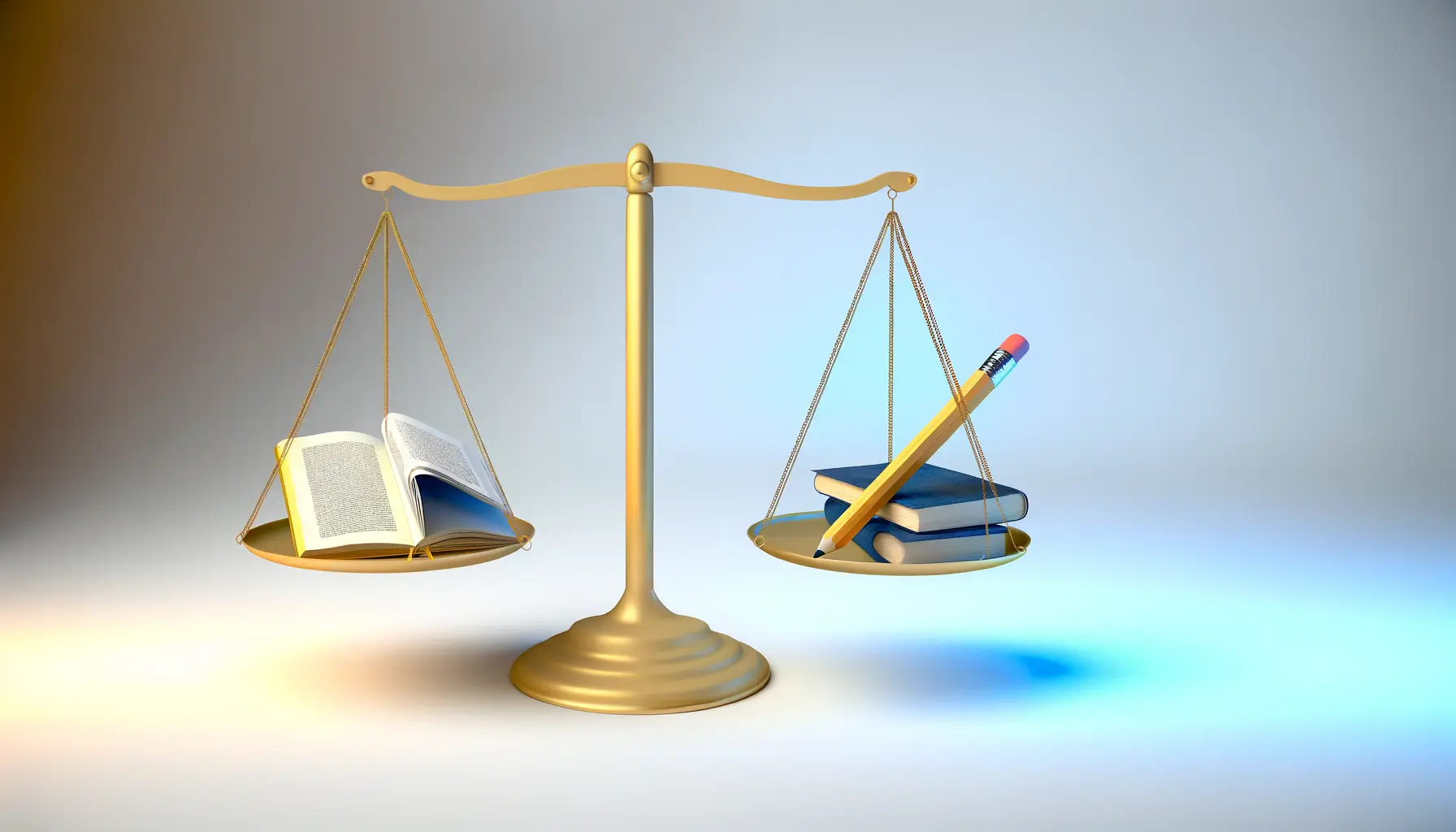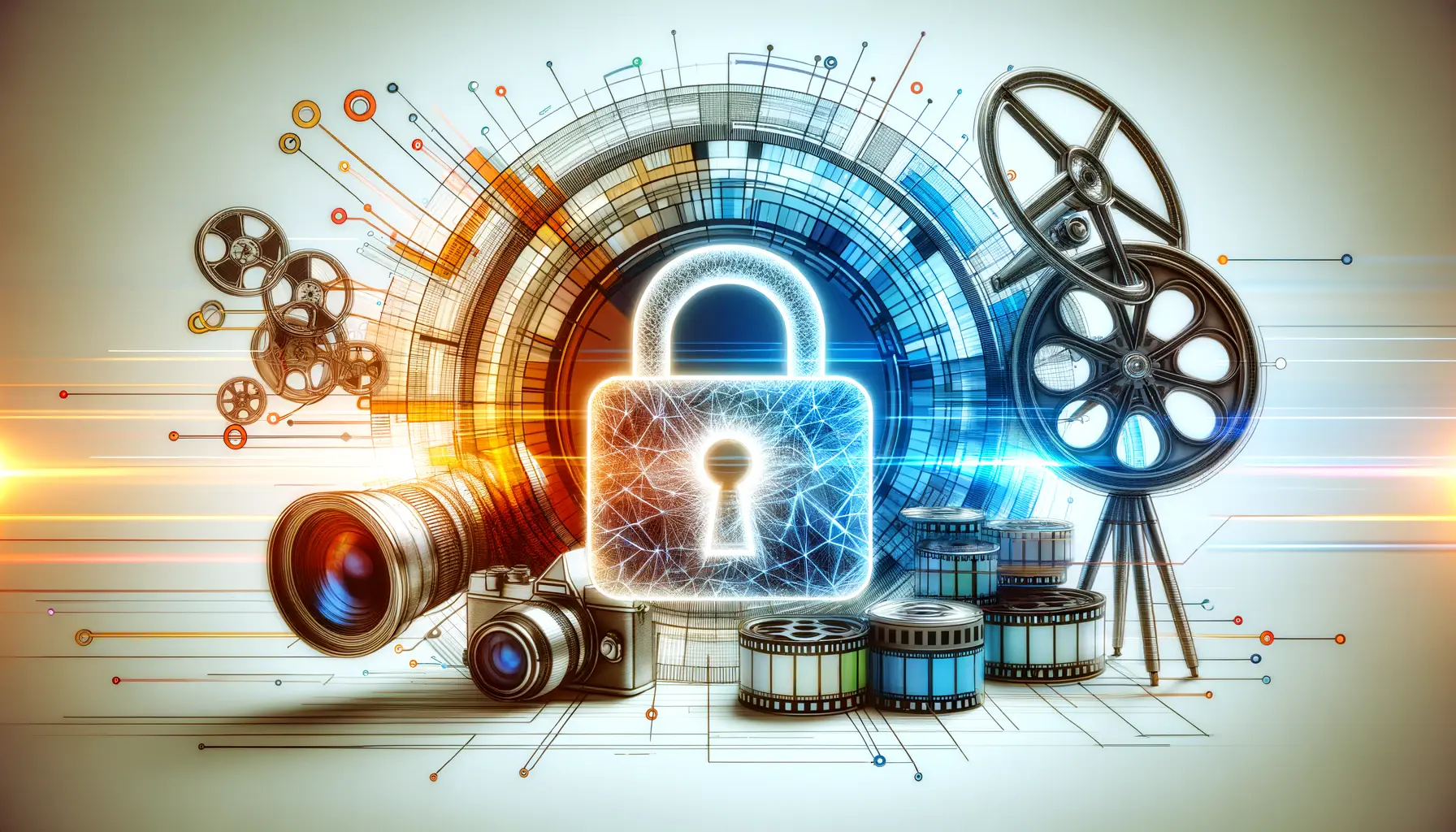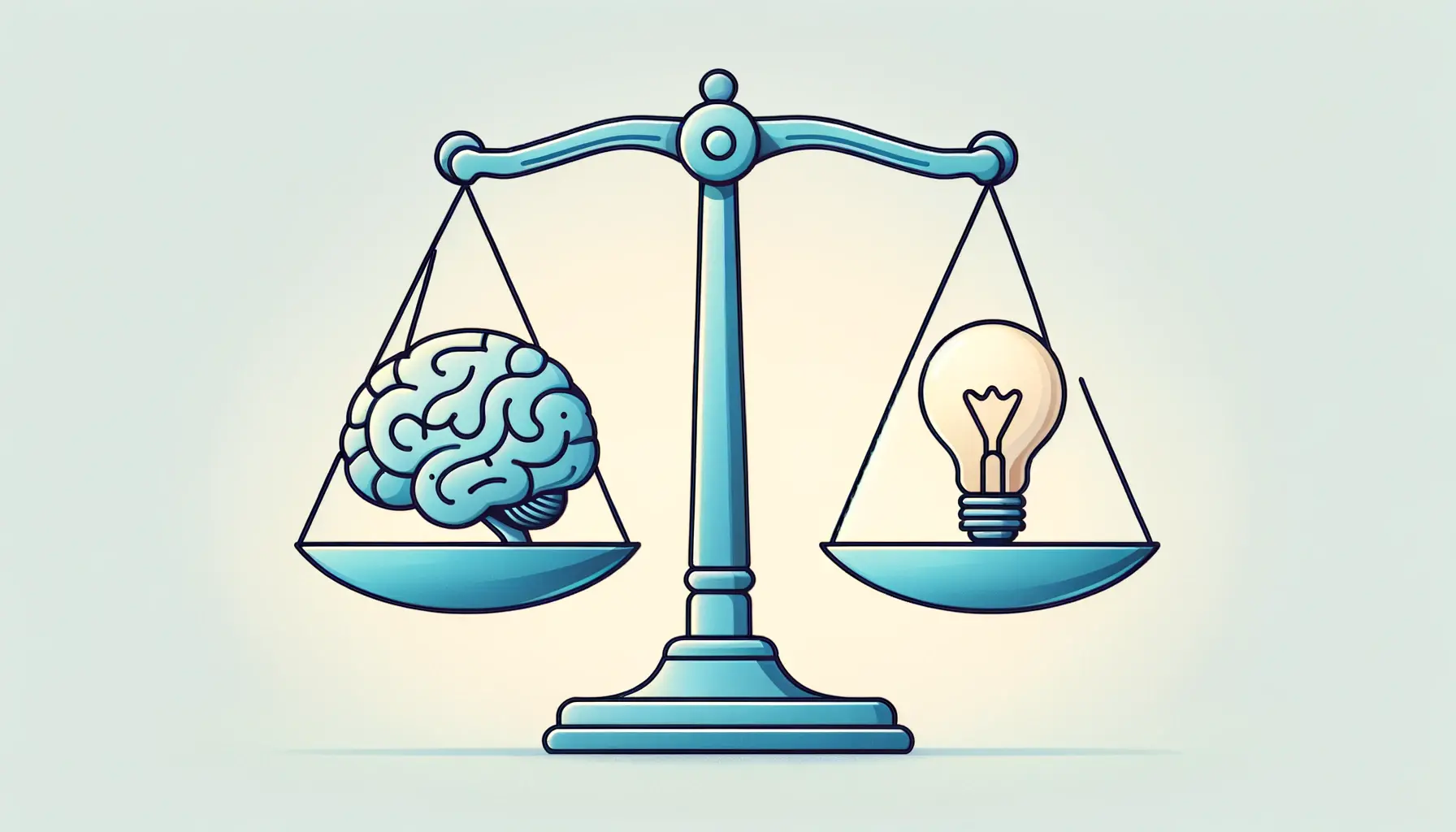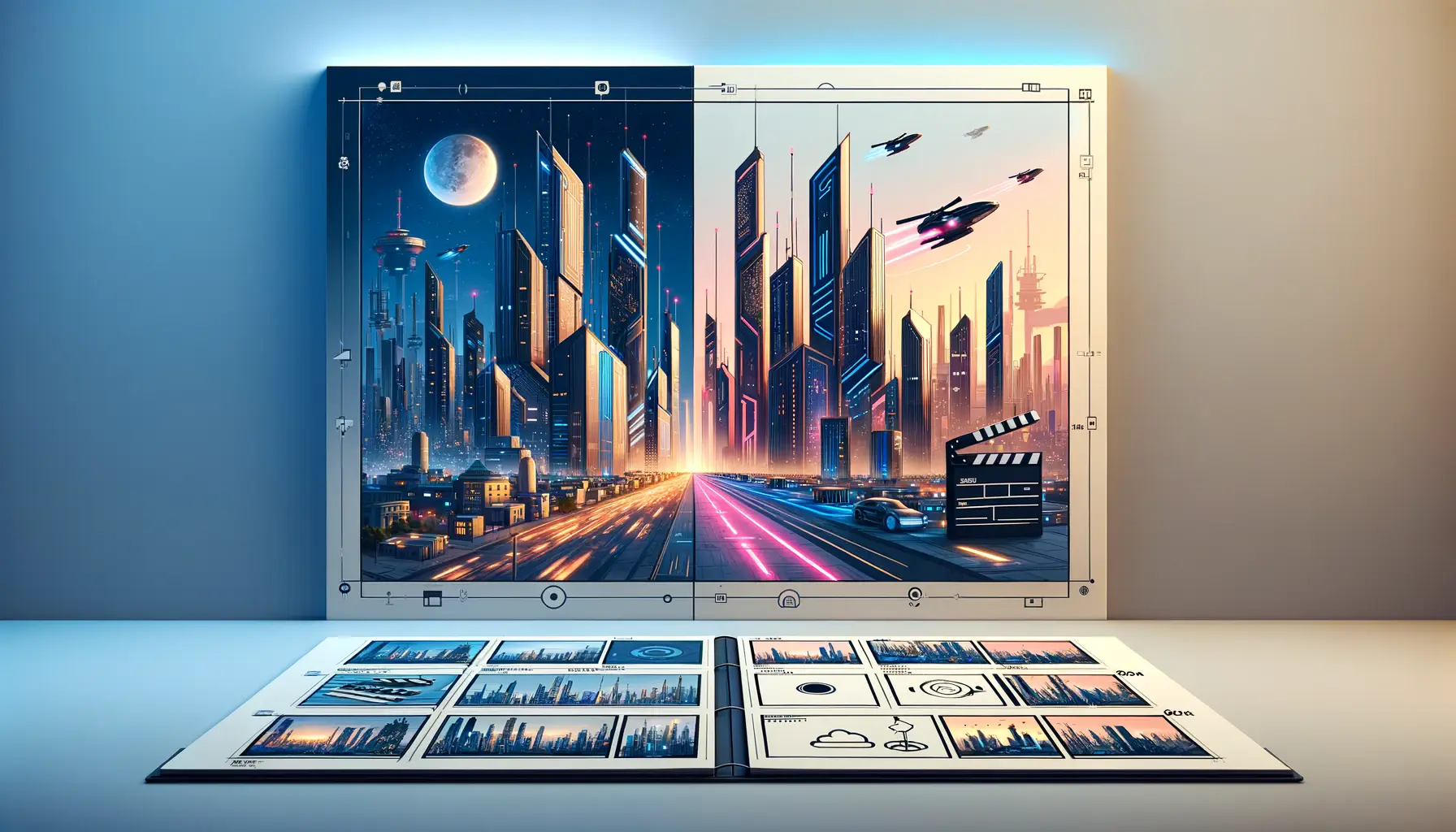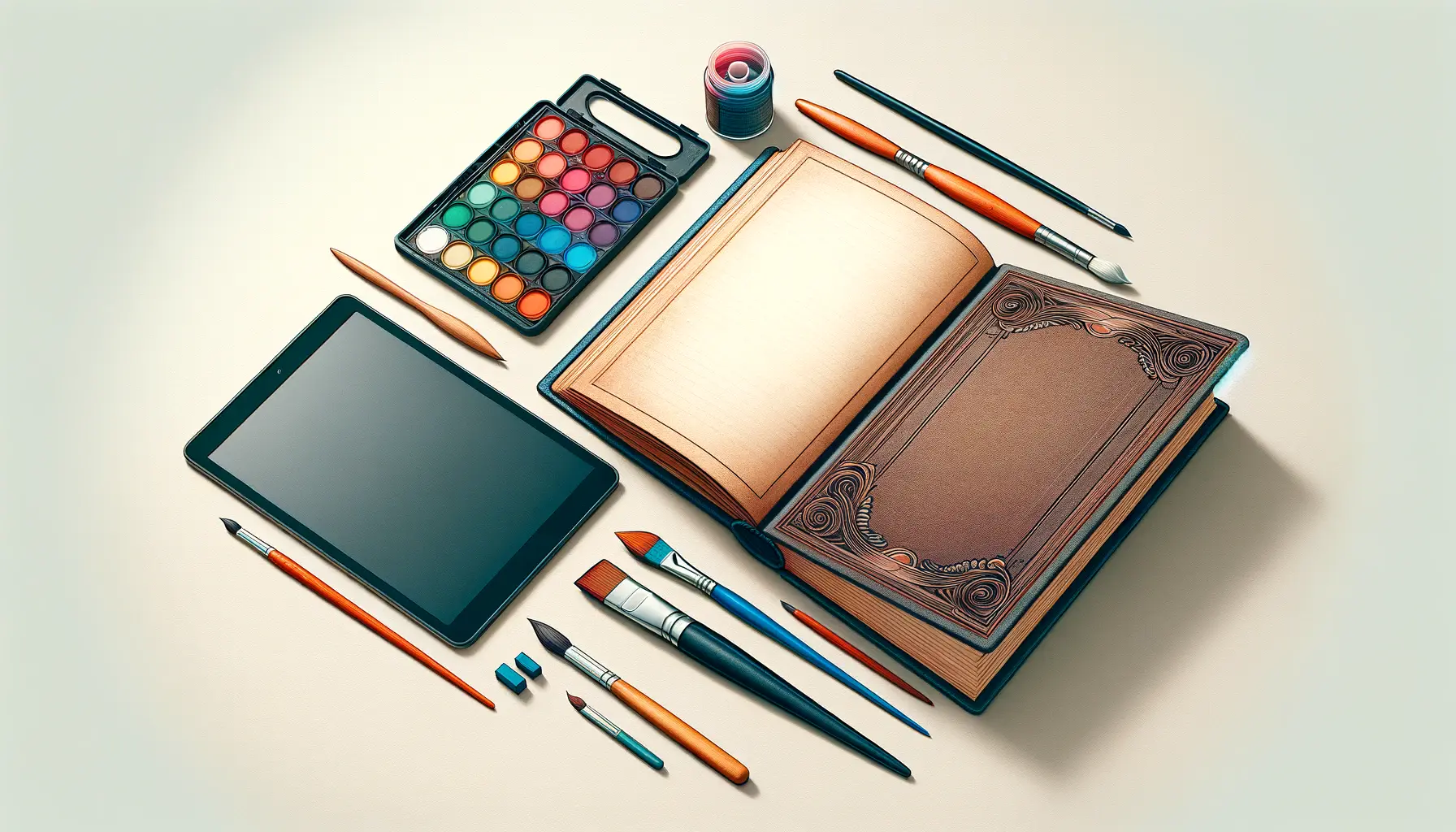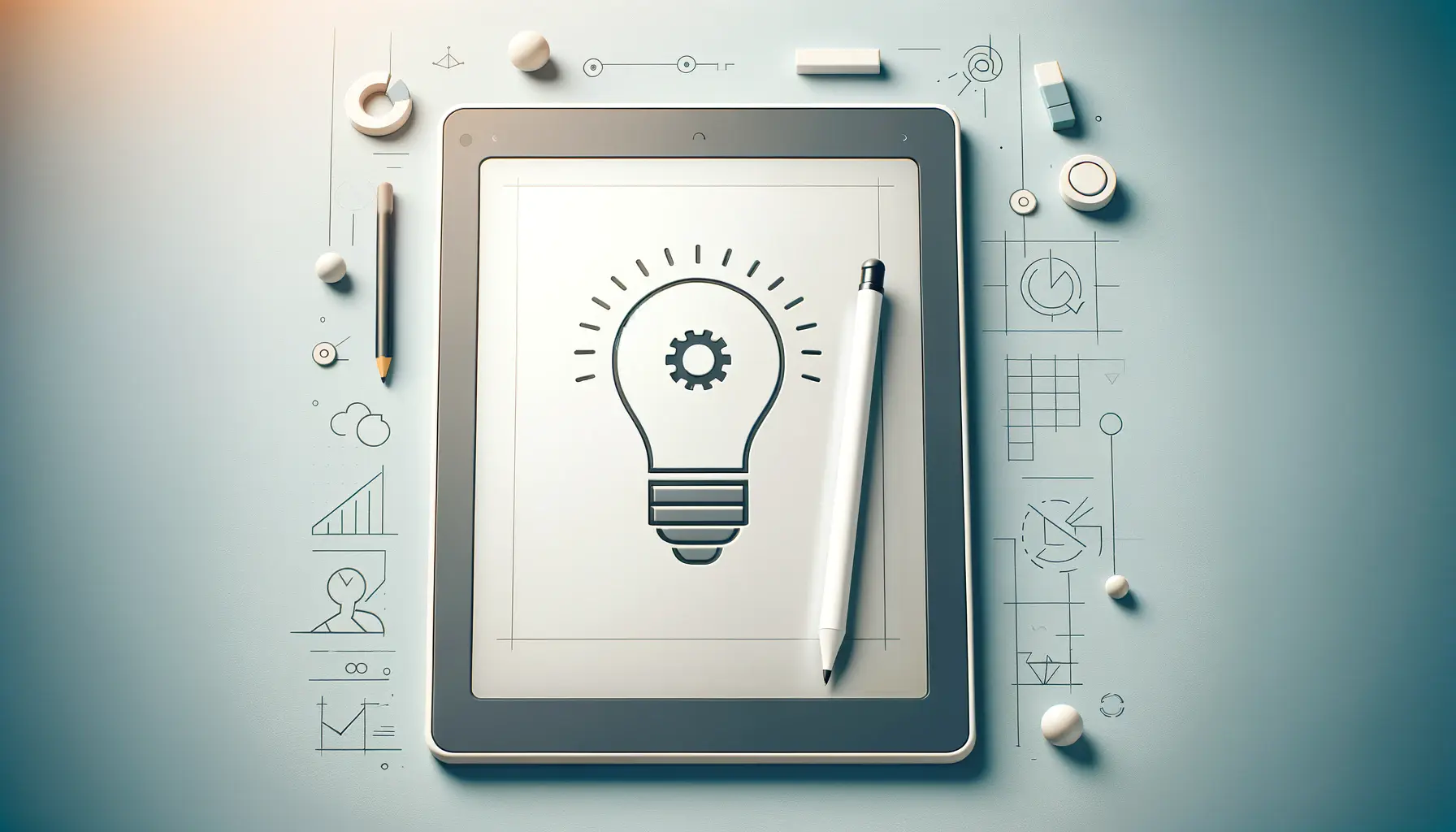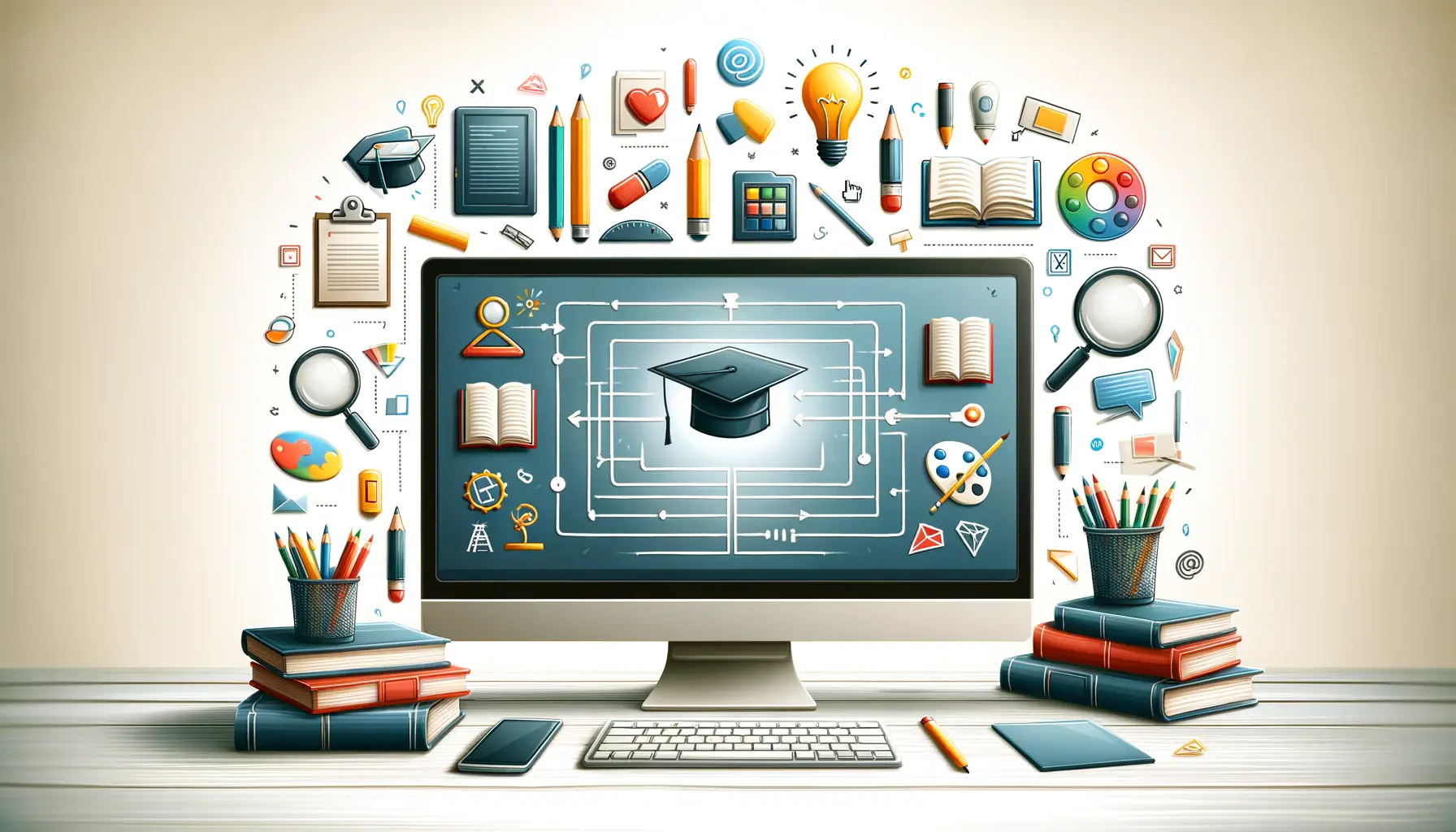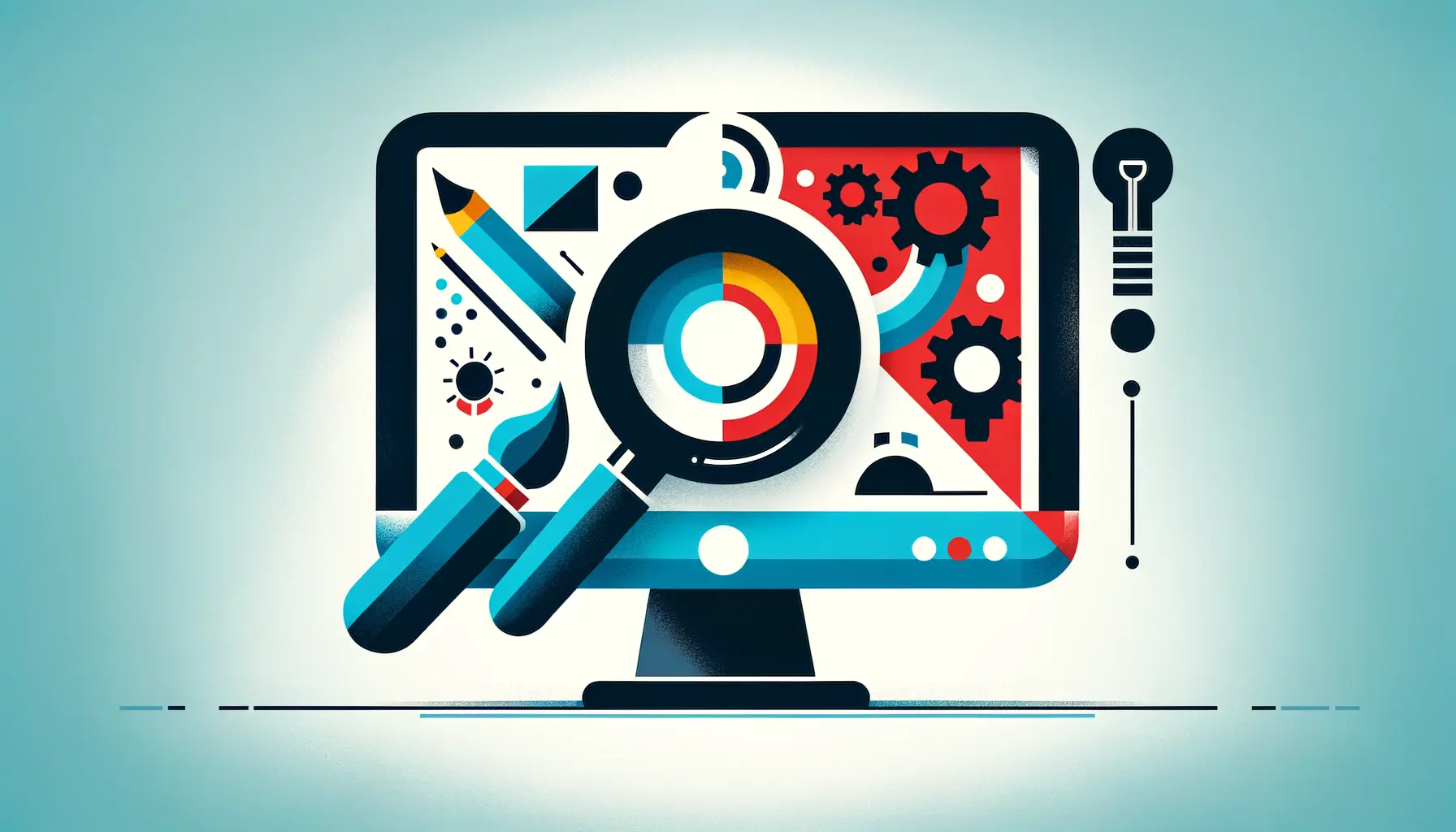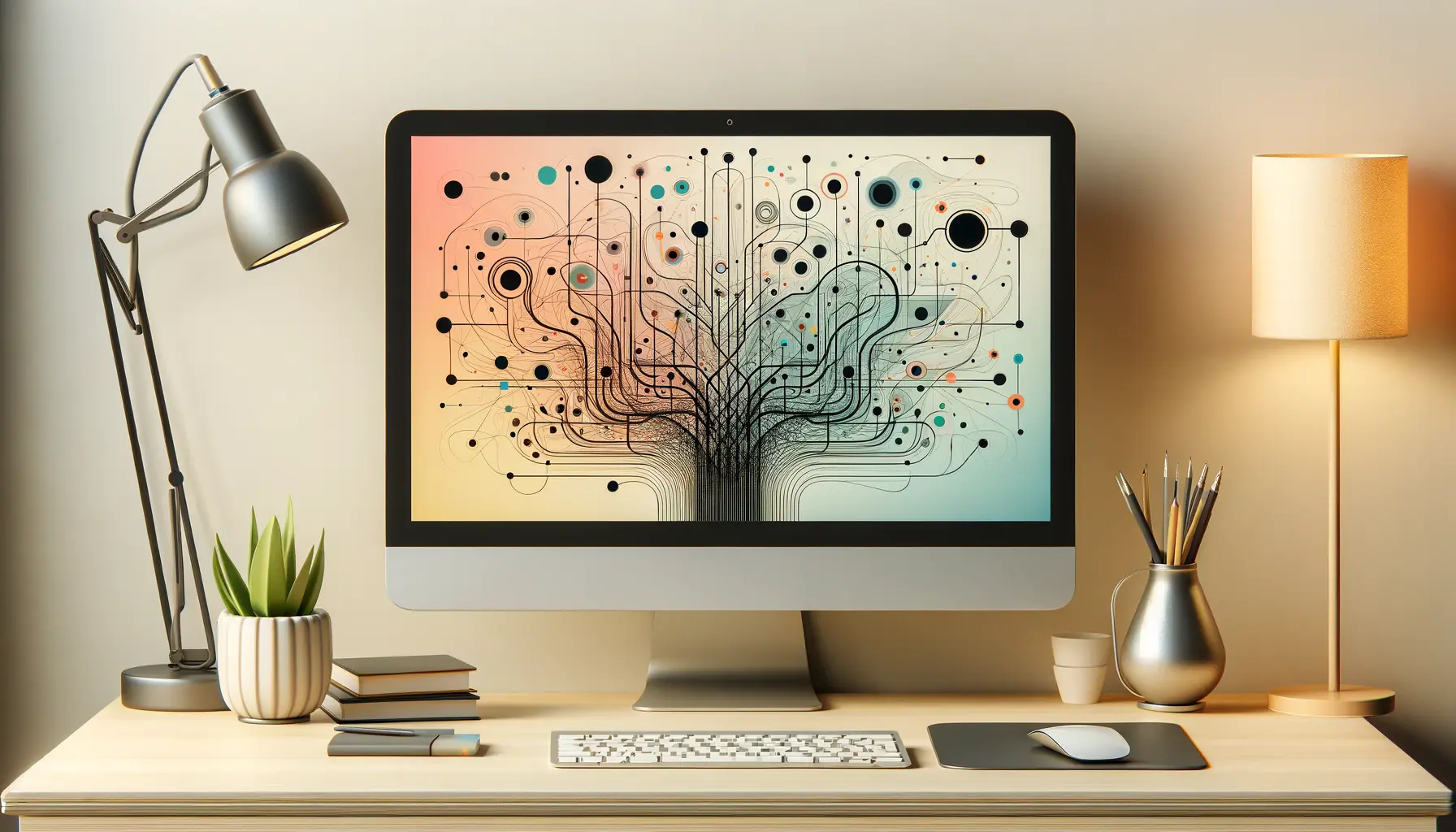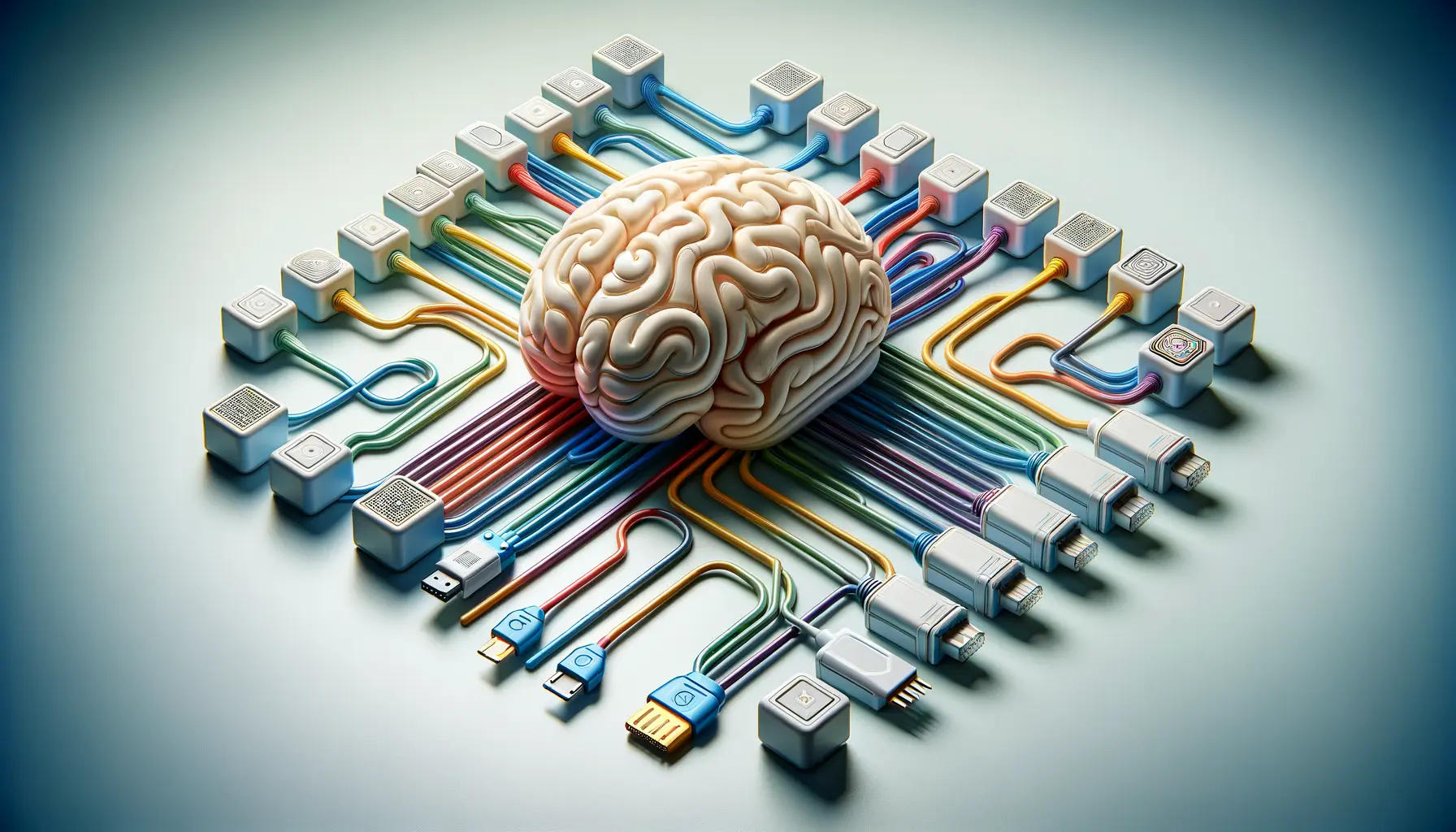The intersection of artificial intelligence and copyright law presents a fascinating and complex landscape, especially with the advent of technologies like DALL-E by OpenAI.
DALL-E, a cutting-edge AI capable of generating highly detailed images from textual descriptions, has sparked a significant discussion around the legalities and ethical considerations of AI-generated content.
As we delve into this topic, it’s crucial to understand the implications of copyright law on AI creations and the ownership rights of the images produced by DALL-E.
Copyright law, designed to protect the rights of creators and promote the creation of original works, faces new challenges in the age of AI.
The emergence of DALL-E raises questions about the nature of creativity and authorship, challenging traditional notions of copyright.
This article aims to explore these challenges, focusing on the legal frameworks that govern AI-generated content and the implications for creators, users, and the broader legal landscape.
By examining the current state of copyright law in relation to DALL-E, we can gain insights into how the legal system is adapting to the rapid advancements in AI technology.
- Understanding Copyright Law in the Age of AI
- The Impact of DALL-E on Creative Industries
- Legal Precedents and Copyright Claims Involving AI
- Copyright and Ethical Considerations in AI Art
- Adapting Copyright Policies for AI Innovations
- Future Directions in AI and Copyright Law
- Strategies for Creators Navigating AI Copyright Issues
- Embracing the Future of Creativity and Copyright with AI
- DALL-E and Copyright: Essential FAQs
Understanding Copyright Law in the Age of AI
At its core, copyright law is designed to protect original works of authorship, including literary, musical, dramatic, and artistic works.
However, the advent of AI technologies like DALL-E introduces a new dimension to the concept of authorship.
The primary question that arises is whether AI-generated images can be considered original works protected under copyright law.
This question challenges the traditional understanding of creativity, which has always been associated with human authorship.
The legal landscape is currently evolving to address these challenges.
Some jurisdictions have started to explore the idea of extending copyright protection to works created by artificial intelligence, under certain conditions.
However, the debate is far from settled.
The key issue revolves around the concept of originality and whether an AI, following its programming and learning from vast datasets, can create something truly original, or if it merely replicates patterns it has been trained on.
The Role of DALL-E in Shaping Copyright Discussions
DALL-E’s ability to generate unique images based on textual prompts has put it at the forefront of discussions about AI and copyright.
The technology demonstrates that AI can produce works that, to the untrained eye, appear original and creative.
This capability prompts a reevaluation of what constitutes creativity and whether the legal definition of authorship needs to be expanded to include AI-generated works.
Despite the innovative nature of DALL-E, the legal system’s current stance is that copyright protection is reserved for human creators.
This perspective is rooted in the belief that creativity requires a human element, something that AI, as it stands, cannot replicate.
The debate continues, with some arguing for a more inclusive definition that recognizes the evolving nature of creativity in the digital age.
Understanding the nuances of copyright law in relation to AI technologies like DALL-E is crucial for creators, users, and legal professionals navigating this new terrain.
The Impact of DALL-E on Creative Industries
The introduction of DALL-E and similar AI technologies has had a profound impact on creative industries, transforming how content is created, distributed, and monetized.
These changes bring both opportunities and challenges for creators, businesses, and copyright holders.
Understanding these impacts is crucial for navigating the evolving landscape of digital creativity.
One of the most significant changes is the democratization of content creation.
DALL-E enables individuals without traditional artistic skills to generate high-quality images, lowering the barriers to entry for creative expression.
This shift has the potential to unleash a wave of innovation and diversity in visual content, enriching the digital ecosystem.
Challenges for Copyright Holders
However, the rise of AI-generated content also poses challenges for copyright holders.
The ability of AI like DALL-E to produce images that might closely resemble copyrighted works raises concerns about potential infringement.
This situation complicates the enforcement of copyright protections and necessitates new strategies for identifying and addressing unauthorized use of intellectual property.
Moreover, the ease with which AI can generate vast amounts of content could lead to market saturation, making it harder for traditional artists and creators to compete.
The potential for AI to disrupt existing business models in the creative industries requires stakeholders to adapt and consider new forms of revenue generation and copyright management.
Opportunities for Innovation and Collaboration
- Innovation in Content Creation: DALL-E’s capabilities encourage experimentation with new forms of visual storytelling, expanding the possibilities for creative expression.
- Collaboration between Humans and AI: The technology opens up opportunities for collaborative projects that combine human creativity with AI’s computational power, leading to novel artworks and designs.
- New Business Models: The integration of AI in creative processes can lead to the development of new business models, such as personalized content creation and automated design services.
The impact of DALL-E on creative industries underscores the need for a balanced approach that harnesses the benefits of AI while addressing the challenges it poses to copyright and creativity.
As the technology continues to evolve, so too will its role in shaping the future of creative work.
Exploring the intersection of AI and creativity offers a glimpse into the future of art, design, and storytelling, where the lines between human and machine-generated content become increasingly blurred.
Legal Precedents and Copyright Claims Involving AI
The legal system has begun to address the complex issues surrounding AI and copyright through various cases and rulings.
These legal precedents are shaping the framework within which AI-generated content like that produced by DALL-E is evaluated.
Understanding these cases provides insight into the current legal stance on AI and copyright, as well as the direction future legislation and litigation might take.
One notable aspect of legal proceedings involving AI-generated content is the lack of consensus on key issues.
Courts have grappled with questions about authorship, originality, and the application of existing copyright laws to works produced by non-human entities.
These cases highlight the challenges in applying traditional legal concepts to the products of advanced technology.
Key Legal Challenges and Considerations
- Authorship and Originality: Determining the author of AI-generated content is a fundamental challenge. Legal systems traditionally recognize humans as authors, but AI complicates this by playing a significant role in the creative process.
- Application of Copyright Laws: The extent to which existing copyright laws apply to AI-generated works is a matter of ongoing debate. Some argue that new legislation is needed to specifically address the nuances of AI-generated content.
- Intellectual Property Rights: The question of who holds the copyright to AI-generated content—whether it’s the creator of the AI, the user who provided the input, or the AI itself—is yet to be definitively answered.
Despite these challenges, some jurisdictions have started to adapt their legal frameworks to accommodate the realities of AI-generated content.
For example, certain copyright offices have issued guidelines on registering works created with the assistance of AI, marking a step towards recognizing the unique nature of AI-generated creations.
Implications for Future Legal Developments
The evolving legal landscape suggests that lawmakers and courts will continue to refine their approaches to AI and copyright.
Future legal developments are likely to focus on creating a balance that encourages innovation while protecting the rights of creators and copyright holders.
This balance is crucial for fostering a healthy ecosystem where AI technologies like DALL-E can contribute positively to creative industries.
As legal precedents accumulate, they will provide clearer guidance for creators, users, and legal professionals navigating the copyright implications of AI-generated content.
The ongoing dialogue between technology and law is essential for ensuring that copyright law remains relevant in the digital age.
The intersection of AI and copyright law is a dynamic area of legal and technological evolution, highlighting the need for adaptable legal frameworks that can accommodate the complexities of AI-generated content.
Copyright and Ethical Considerations in AI Art
The proliferation of AI technologies like DALL-E in the realm of art and creativity brings to the forefront not just legal, but also ethical considerations.
The capacity of AI to generate art that rivals human creativity raises questions about the value of art, the role of the artist, and the ethical implications of using AI to create works that are traditionally the domain of human creativity.
At the heart of these ethical considerations is the concern over the originality and authenticity of AI-generated art.
While DALL-E can produce images that are visually stunning and seemingly original, the process lacks the personal touch, intention, and experience that human artists bring to their creations.
This distinction raises debates about the intrinsic value of AI art and its place in the broader art world.
Respecting Copyright and Creative Integrity
Another significant ethical concern is the use of copyrighted material as input for generating AI art.
DALL-E and similar technologies rely on vast datasets of existing artwork to learn and generate new images.
This process can inadvertently produce works that closely resemble copyrighted pieces, leading to potential copyright infringement and raising questions about the fairness of using others’ creations without explicit consent.
Ensuring that AI technologies respect the copyright and creative integrity of human artists is crucial.
This involves developing mechanisms to prevent AI from creating works that infringe on existing copyrights and ensuring that artists are fairly compensated for their contributions to the datasets that train AI systems.
Transparency and Accountability in AI Art Creation
- Transparency: Clear disclosure about the use of AI in the creation of artworks is essential for maintaining trust and integrity in the art world. Artists and creators using AI tools should be transparent about their processes, distinguishing between human and AI contributions.
- Accountability: As AI plays a more significant role in art creation, establishing accountability for the content it produces becomes imperative. This includes addressing ethical concerns related to the potential generation of harmful or offensive content.
The ethical landscape surrounding AI-generated art is complex and multifaceted.
As AI continues to evolve and become more integrated into creative processes, the art world must navigate these ethical dilemmas thoughtfully.
Balancing innovation with respect for copyright, creative integrity, and ethical standards is essential for ensuring that AI contributes positively to the future of art.
The ethical use of AI in art creation requires a careful consideration of copyright, originality, and the impact on human artists, ensuring that AI serves as a tool for enhancing creativity rather than undermining it.
Adapting Copyright Policies for AI Innovations
As AI technologies like DALL-E continue to evolve, there’s a growing need for copyright policies to adapt accordingly.
The unique capabilities of AI to generate original content challenge the traditional frameworks of copyright law, necessitating a reevaluation of how these laws apply to AI-generated works.
Adapting copyright policies to accommodate AI innovations is crucial for fostering creativity and ensuring fair use of digital content.
The adaptation process involves several key considerations, including the recognition of AI-generated content as a new category of creative work, the establishment of clear guidelines for copyright ownership, and the development of policies that encourage innovation while protecting the rights of human creators.
This balance is essential for promoting a healthy ecosystem where AI and human creativity can coexist and flourish.
Establishing Guidelines for AI-Generated Content
- Defining Authorship: One of the first steps in adapting copyright policies is to define what constitutes authorship in the context of AI-generated content. This includes determining whether the AI, the user who inputs the prompts, or the developers of the AI should be considered the author.
- Ownership Rights: Clarifying the ownership rights of AI-generated works is essential. This involves creating legal frameworks that recognize the contributions of both AI technologies and human creators, ensuring fair compensation and distribution of rights.
- Use of Copyrighted Material: Developing guidelines for the use of copyrighted material in training AI systems is crucial for preventing infringement and respecting the rights of original creators.
These guidelines not only aim to protect the rights of human creators but also to ensure that AI-generated content can be shared, used, and enjoyed in a way that promotes innovation and creativity.
The goal is to create a legal environment that supports the growth of AI technologies while maintaining the integrity and value of copyright law.
Challenges and Opportunities in Policy Adaptation
Adapting copyright policies for AI innovations presents both challenges and opportunities.
On one hand, it requires navigating complex legal, ethical, and technical issues to develop policies that are fair and effective.
On the other hand, it offers a chance to rethink and modernize copyright laws to better reflect the realities of digital creativity and technological advancement.
The ongoing dialogue between policymakers, legal experts, technologists, and creators is vital for shaping a future where AI and human creativity can thrive together.
By addressing the challenges and leveraging the opportunities, we can ensure that copyright policies remain relevant and supportive of innovation in the age of AI.
The adaptation of copyright policies for AI innovations is a critical step towards creating a legal framework that supports creativity, innovation, and fair use in the digital age.
Future Directions in AI and Copyright Law
The rapid advancement of AI technologies like DALL-E and their impact on creative industries suggest that the intersection of AI and copyright law will continue to be a dynamic and evolving field.
As we look to the future, several key directions are emerging that will shape the legal, ethical, and creative landscapes.
These future directions not only highlight the potential of AI in transforming creative expression but also underscore the importance of developing legal frameworks that can accommodate these technological advancements.
One of the most significant future directions is the potential for AI to become a collaborative partner in the creative process.
This shift necessitates a reevaluation of copyright law to recognize and protect the unique contributions of both human and AI creators.
Additionally, the increasing use of AI in content creation poses questions about the ownership of AI-generated works and the rights of the individuals and entities involved in their creation.
Technological Advancements and Legal Challenges
- Innovations in AI: Ongoing advancements in AI technology will continue to push the boundaries of what is possible in creative expression. This will challenge existing copyright laws to adapt and provide clear guidelines for new forms of content.
- Legal Frameworks: The development of legal frameworks that specifically address AI-generated content is crucial. These frameworks must balance the need for copyright protection with the desire to encourage innovation and creativity.
Moreover, the global nature of the internet and digital content creation calls for international cooperation in developing copyright standards for AI.
Harmonizing laws across jurisdictions will be essential for managing the distribution and use of AI-generated content on a global scale.
Empowering Creativity and Innovation
The future of AI and copyright law holds the promise of empowering creativity and innovation in unprecedented ways.
By establishing legal and ethical guidelines that support the collaborative potential of AI, we can unlock new opportunities for artists, creators, and innovators.
This involves not only protecting the rights of human creators but also recognizing the value and impact of AI-generated content.
As we navigate these future directions, the ongoing dialogue between technology, law, and creativity will be key to ensuring that the benefits of AI are realized in a way that respects copyright and fosters a vibrant and diverse creative ecosystem.
The future of AI and copyright law is a journey of balancing innovation with protection, ensuring that the legal frameworks evolve to support the creative possibilities of AI while safeguarding the rights and interests of human creators.
Strategies for Creators Navigating AI Copyright Issues
In the rapidly evolving landscape of AI and copyright, creators face unique challenges and opportunities.
Navigating these complexities requires a proactive approach, armed with knowledge and strategies that protect their interests while embracing the possibilities of AI.
This final section offers practical advice for creators looking to harness the power of AI technologies like DALL-E, ensuring their creative and legal interests are safeguarded in the digital age.
Understanding the legal implications of using AI in the creative process is the first step.
Creators should familiarize themselves with the current state of copyright law as it pertains to AI-generated content, staying informed about ongoing changes and debates in the field.
This knowledge base will empower creators to make informed decisions about incorporating AI into their work.
Best Practices for AI Integration
- Clear Attribution: When using AI to create or enhance artworks, clearly attributing the role of AI is essential. This transparency helps maintain integrity and trust in the creative community.
- Understanding AI Capabilities: Creators should have a solid understanding of the capabilities and limitations of AI technologies they use. This includes awareness of how these tools generate content and the potential legal implications.
- Protecting Intellectual Property: Implementing strategies to protect intellectual property when using AI is crucial. This might involve copyright registration, utilizing contracts that specify rights and ownership, and being aware of the terms of service for AI platforms.
Engaging with the broader community of creators, legal experts, and technologists can also provide valuable insights and support.
Collaboration and dialogue are key to navigating the complexities of copyright in the age of AI, allowing creators to share experiences, strategies, and solutions.
Advocacy and Legal Reform
Finally, creators have a role to play in advocating for legal reform that reflects the realities of AI in creative work.
Participating in discussions, contributing to policy debates, and working with copyright organizations can help shape a legal environment that supports creativity and innovation.
By voicing their needs and perspectives, creators can influence the development of copyright laws that are fair, flexible, and forward-looking.
The journey of integrating AI into creative practices is filled with both challenges and opportunities.
By adopting a strategic approach to copyright and AI, creators can navigate this landscape successfully, leveraging AI’s potential to enrich their work while ensuring their rights are protected.
Empowering creators with the knowledge and strategies to navigate AI copyright issues is essential for fostering innovation and protecting intellectual property in the digital era.
Embracing the Future of Creativity and Copyright with AI
The journey through the complexities of copyright law in the age of AI, particularly with innovations like DALL-E, reveals a landscape at the cusp of transformation.
As we stand on this precipice, looking towards a future where creativity and technology merge in unprecedented ways, it becomes clear that the path forward is not just about navigating legalities but about embracing a new paradigm of artistic expression and intellectual property.
The Harmonization of AI and Human Creativity
The advent of AI technologies like DALL-E has initiated a pivotal shift in the creative industries, challenging us to reconsider the essence of creativity, authorship, and copyright.
This shift is not a threat but an opportunity to redefine what it means to be a creator in the digital age.
The harmonization of AI and human creativity promises a future where the boundaries of imagination are expanded, and the potential for innovation is limitless.
Adapting Legal Frameworks for the Digital Age
As we embrace this future, the adaptation of legal frameworks to the realities of AI-generated content becomes imperative.
The evolution of copyright law must reflect a balance between protecting the rights of human creators and fostering the growth of AI as a tool for creative expression.
This balance is crucial for ensuring that the legal system supports, rather than stifles, the potential of AI to enrich the cultural landscape.
- Recognition of AI-generated works as a new category of creative output.
- Clarification of copyright ownership and authorship in the context of AI.
- Development of international standards for copyright in the digital age.
The dialogue between creators, legal experts, policymakers, and technologists will be central to achieving these objectives.
Together, we can forge a future that respects the legacy of copyright while embracing the possibilities of AI.
Empowering Creators in the Age of AI
For creators, the rise of AI like DALL-E is a call to action—a prompt to explore new forms of expression, to advocate for laws that reflect the changing landscape, and to engage with AI as partners in creativity.
By equipping themselves with knowledge and strategies for navigating copyright issues, creators can leverage AI to unlock new realms of possibility, without forsaking the rights and recognition that are the foundation of creative work.
In conclusion, the intersection of DALL-E, copyright, and creativity is a testament to the enduring power of human innovation.
It challenges us to envision a future where AI and human creativity coalesce, creating a world enriched by both the precision of technology and the depth of human emotion.
As we move forward, let us embrace this challenge with open minds and collaborative spirits, ensuring that the future of creativity is as boundless as our collective imagination.
DALL-E and Copyright: Essential FAQs
Explore commonly asked questions about navigating copyright with DALL-E’s AI-generated content.
Yes, you own the images you create with DALL-E, including rights to reprint, sell, and merchandise, subject to OpenAI’s Content Policy and Terms.
Most legal perspectives agree that DALL-E images do not have any copyright, making them public domain, but this is subject to ongoing legal discussions.
No, the public version of DALL-E 3 is designed to avoid creating anything that infringes on existing copyrights.
According to OpenAI, creators own the images they generate using DALL-E, granting them the right to sell and distribute these images.
Yes, while creators own their DALL-E images, usage must comply with OpenAI’s Content Policy and Terms, which may include restrictions based on content type.
Copyright law’s current stance does not typically extend protection to AI-generated art, including DALL-E creations, viewing them as public domain.
DALL-E is programmed to avoid creating images that closely replicate copyrighted works, aiming to prevent copyright infringement.
The main legal issues include determining authorship, copyright eligibility of AI-generated works, and how existing laws apply to such content.
